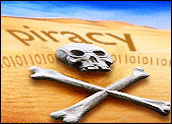
After more than a decade in the software privacy and antipiracy space, Keith Beeman, general manager, Worldwide Anti-Piracy, Small and Midmarket, Solutions & Partners for Microsoft, says he has been able to gain a first-hand view of software piracy issues on a global scale.
Piracy is a pervasive issue that can often catch enterprise customers by surprise, Beeman said. When it does, the costs to the ecosystem — including the end user — can be significant.
Here is what he told the E-Commerce Times during a recent IDC conference in Toronto, Ontario.
E-Commerce Times: When we see studies about software piracy, what types of activities do they include?
Keith Beeman:
Basically it’s any unlicensed use of software, whether intentional or not. Piracy can take on many, many forms, from counterfeiting to simple under-licensing or misuse of licenses within a customer’s environment.
The issue pretty much breaks out into three types of users: those that simply didn’t know; the casual user of unlicensed software; and blatant, intentional piracy. Globally they pretty much split into even thirds. Most business customers we’ve met with are in the first category or play “around the edges” of the second one.
ECT: Has there been any progress in stopping software piracy?
KB:
Actually, while overall numbers have grown worldwide, North American losses from software piracy are on the decline. Of the 108 countries surveyed, 60 of those went down. The biggest increase was in the BRIC [Brazil, Russia, India, China] markets. A lot of that is attributable to the huge growth in the IT industry in those countries.
ECT: Other than the revenue losses for vendors, is software piracy really hurting anyone else?
KB:
One of the most common misperceptions is that software piracy is a victimless crime. No it’s not. Sure there are the losses in revenues, but there are much bigger implications for customers and channel partners. And depending on whether you’re a large business, a small one or a consumer, the impact can vary. Lack of support is at the top of the list. If a customer needs help and we have no records of the licenses, they’re simply not eligible for support. That’s a very common scenario.
ECT: So how much do companies really know about all this?
KB:
In terms of counterfeiting, in some cases it’s impossible to discern the counterfeit software. In others it’s deliberate because of cost constraints or access, especially in countries where some companies simply don’t have the money to spend and consider free software to be worth the risk.
In North America the main culprit is license misuse. More often than not they simply haven’t been picked up by IT managers and most big organizations don’t even know they have these issues.
So when we talk to customers, it’s not a case of “hey you’ve pirated our software,” it’s more of a “you have licensing issues” approach.
ECT: Won’t service providers just turn a blind eye to these things if they find it at a customer site?
KB:
Reputable vendor partners going into a customer environment will not work with counterfeit or pirated software. The risks are simply not worth it. That leaves the customer with a big problem. Providers that do agree to work with pirated software [found at a site] need to understand that it will have both a direct and indirect impact on them.
ECT: So what should they do?
KB:
Ideally we want the channel to understand those impacts and report misuse to us directly. If they find pirated software at a customer site, they have to walk away. If they don’t they end up having to work around it, and costs go up for the supplier and the customer.
ECT: What should a customer do?
KB:
For one thing they need to know the trade-offs. They should understand the risks of using unlicensed software and the benefits of proper management of their software licenses. That starts with an assessment, which can be performed at no charge.
When we’ve been asked to do an assessment, CIOs are usually shocked to find they do have gaps and are either under or over-licensed. It’s not that they don’t want to know. Usually they’re just not looking hard enough. CIOs don’t want to take risks because they know the downside is so significant.
ECT: So are you saying everyone has a problem?
KB:
We’ve yet to find a customer who is at 100 percent, but there is always going to be a bit of play when you go in and do an assessment. We also find a lot of under-deployment issues as well, which means people are not realizing the potential of the software they do have.
ECT: Isn’t this pretty much a Microsoft problem?
KB:
This is not about big, bad Microsoft losing money. Software piracy is an industry-wide problem. Once we start an assessment at a site, for example, we often find that a problem usually runs across all software licenses in an establishment, whether it’s Microsoft, Adobe, Symantec or Oracle.
We are in fact part of a number of [software] companies who get together one or two times a year to address piracy concerns. We just happen to get more press because we’re a more visible player.
ECT: Any final words about software piracy in business?
KB:
The one thing that businesses need to understand very clearly is that a licensing problem is not really their biggest issue. Rather it’s a symptom of a much bigger concern, and that is poor IT asset management.
IT managers need to be diligent in having the appropriate processes in place. While most companies have a basic level of software asset management in place, a survey will uncover what’s missing and help them be more strategic in their use of IT resources. If you manage your licensing properly you usually end up with some quick wins relating to your hardware cleanup and also gain some significant long-term cost savings by being a lot smarter in the way you use your software.













































Social Media
See all Social Media